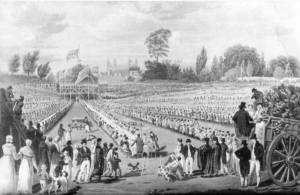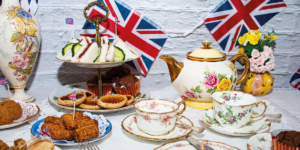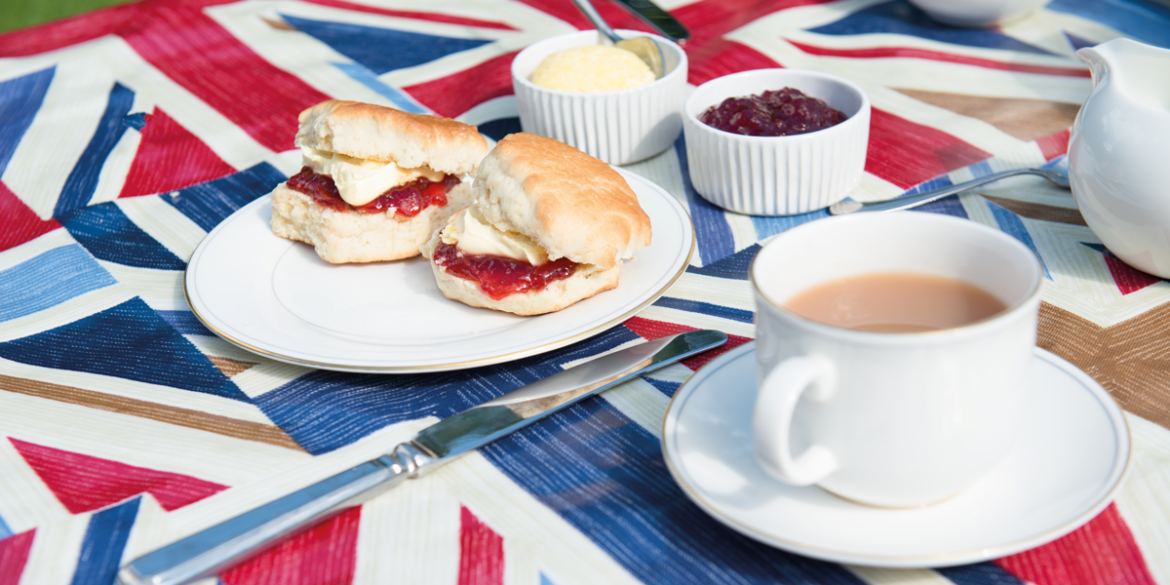Food historian Sue Bailey looks back at past celebrations and feasting in Cambridge as we prepare for the next King’s coronation
Imagine being tasked with organising a celebration for the whole population of Cambridge to dine on the historic turf of Parker’s Piece – and only having 13 days to bring it all together. This was the tall order for the extreme event planning committees of the new Victorian age. Walking over this giant green square from Regent Street to the lime trees planted over 150 years ago on Parkside, you can conceive of the enormous challenge that was hosting over 30,000 people: the whole population of the city at the time.
Victoria’s coronation date of 28 June 1838 was only announced one-and-a-half months before. Throughout the country, cities, towns and villages started to plan their own celebrations. In Cambridge, many ideas were proposed, but by the end of May nothing had happened. Eventually, the mayor and the worthies of the town council discussed how to celebrate the event, but could not make up their minds.
First, the town hall was proposed. But then a bigger, town-based feast was suggested. Vociferous debates discussed dividing the event up into different districts on other greens as Parker’s Piece was too small, and for over 10,000 people there would be a risk of unruly behaviour.

However, the older generation remembered the Cambridge Peace Festival of 1814 on Parker’s Piece (pictured, right), which saw more than 6,000 people at 24 tables eating cold boiled and roast beef, vegetables and plum pudding, with more than 15,000 spectators. Now food costs were lower, the meeting finally agreed on Friday 17 June 1838 that a celebratory dinner would be a splendid and memorable event for the rising generations to recall. So, no pressure!
What resulted was one of the largest and most impressive free outdoor feasts for the public in the country – before or since. Fittingly for Cambridge, the 70 tables seating 15,000 ‘deserving poor’ adults and Sunday school children, were laid out around the central, flower-decorated, crown-shaped bandstand like the spokes of a bicycle wheel. Add to this another 17,000 finely dressed Victorian spectators promenading both in the inner and outer parts of the wheel.
To see an impressive engraving of this, go to the lobby of the University Arms, the first hotel in Cambridge, which opened its doors in 1834 – four years before the event.
Feasts are celebrations marking particular events, and Cambridge is no stranger to these, with the majority of colleges hosting special feasts such as the December Audit Feast at Jesus College. The menu in 1814 – according to the archivist Dr Rob Payne – included palatable roast fowls, Italian cheese, apple pie, custards, jelly and mince pies; but less pleasantly, roast udder, stewed eels and pig’s face, too.
However, the menu celebrating Queen Victoria’s coronation was to be rather more plain ‘good old English fare’. Particularly impressive were the quantities served and how the whole event was organised; transporting all the food to the centre of Parker’s Piece was no mean feat.
Meat, pudding, beer, tablecloths, decorations and music – coordinating committees worked tirelessly every day up to the event. Carpenters constructed tables, and stewards, carvers and waiters were found from the local parishes. Colleges and halls boiled and roasted the meat given at cost by local butchers, as well as cooking the plum puddings.
Over a thousand joints of spit- or oven-roasted beef – mutton, pork, veal and bacon – travelled from college kitchens in carts to the serving areas. Meanwhile, 72lb of mustard, 125 gallons of pickles and 4,500 loaves of bread were laid on to go with the meats. To wash all this down, there were nearly 100 barrels of the best ale to drink, with water as well. And to finish it all off, the diners ate 1,608 plum puddings. These were rather plain – flour, raisins, suet, milk and egg – but designed to be filling and served ‘smoking hot’.
All this was funded by public donations totalling £1,000, equivalent to £142,000 today. That’s quite an amount to raise quickly. But generous donations, collections from the parishes and sales of tickets – to both subscribers who gained special attendance tickets as well as non-subscribers – raised what was necessary. As the dinner finished and crowds moved to Midsummer Common, music, games, a hot air balloon ascent and fireworks concluded a most memorable day.
 So what is Cambridge planning for the upcoming coronation of King Charles III? The most splendid plan is a 21st-century version of the coronation feast on the Piece, recreating in some way the event held in honour of our present King’s great-great-great-grandmother. Not to the same scale and with rather different food, but nevertheless still an emphasis on the less privileged, and with a free feast, pageant and entertainment.
So what is Cambridge planning for the upcoming coronation of King Charles III? The most splendid plan is a 21st-century version of the coronation feast on the Piece, recreating in some way the event held in honour of our present King’s great-great-great-grandmother. Not to the same scale and with rather different food, but nevertheless still an emphasis on the less privileged, and with a free feast, pageant and entertainment.
Sponsors are enabling this, and 1,000 tickets are being given to local charities for disadvantaged groups in the community. Sponsors, as in the original feasts, will also attend the event. Romsey Mill – a charity dedicated to creating opportunities for local young people and families – is the principal partner, while charities including Jimmy’s, the YMCA, Street Aid, It Takes a City and Wintercomfort are also involved.
The pageant on Parker’s Piece will include choirs and musicians from Cambridge colleges, performances by local talents and schoolchildren, together with screenings of films about the city made by local residents and talks about local history.
To commemorate the coronation and celebrate the best of seasonal British produce, University Arms chef Tristan Welch is working with top regional growers, producers and suppliers to host food stalls in a special enclosure on the day.
As Tristan says: “Originally, they all chipped in – all college kitchens. The town became part of the festivities. Local traders, butchers, bakers, creators, anybody and everybody became involved.
“We want to plan for a lovely menu,” he continues. “A unique blend of purveyors from amazing distillers, historic bakeries, local smokehouses, brewers and various others. This is a once-in-a-lifetime event, and a chance to emphasise everything that makes Cambridge and our local food scene so vibrant. Times are hard for all, and food is one of the harder-hit areas, so as with the massive Victorian celebration, all food and drink will be given at cost. The plan is to be part of the city celebrating the community.”
This outstanding and historic event to promote inclusion within Cambridge and the surrounding community should be as memorable as its predecessor – a fitting celebration for our new King.

